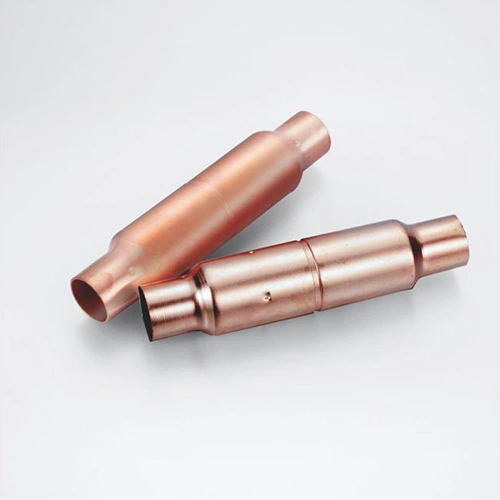As technology continues to advance, the use of copper silencers in HVAC systems is becoming more prevalent. Copper, known for its excellent thermal conductivity and durability, is an ideal material for silencers in heating, ventilation, and air conditioning (HVAC) systems. In this blog, we will explore the various applications of copper silencers in HVAC systems and how they contribute to improved overall system performance.
HVAC systems are designed to maintain a comfortable indoor environment by regulating temperature, humidity, and air quality. However, they can produce noise due to the movement of air through ducts, fans, and other components. Silencers are used in HVAC systems to reduce noise levels and ensure a quieter environment for occupants.
The copper silencer is particularly effective in reducing noise levels in HVAC systems due to the material's acoustic properties. Copper has a high density, which helps to absorb sound waves and prevent them from traveling through the system. As a result, copper silencers can effectively reduce noise levels and improve overall comfort in indoor spaces.

In addition to reducing noise levels, copper silencers offer several other benefits in HVAC systems. The thermal conductivity of copper allows for efficient heat transfer, which is crucial for maintaining consistent temperatures in heating and cooling systems. Copper is also highly durable and resistant to corrosion, ensuring the longevity of the silencer and minimizing maintenance costs over time.
Furthermore, copper is a sustainable material that can be recycled and reused, making it an environmentally friendly choice for HVAC systems. By choosing copper silencers, HVAC system designers and operators can contribute to reducing their carbon footprint and promoting sustainable practices in building operations.

Copper silencers are commonly used in a variety of HVAC applications, including air handling units, ducts, and exhaust systems. In air handling units, copper silencers can be installed in supply and return air ducts to reduce noise levels generated by fans and air movement. In ductwork, copper silencers are used to eliminate noise caused by airflow turbulence and vibrations in the system.
Additionally, copper silencers can be integrated into exhaust systems to reduce noise levels from mechanical equipment, such as boilers, chillers, and air compressors. By incorporating copper silencers into HVAC systems, building owners and occupants can enjoy a quieter and more comfortable indoor environment.

When selecting copper silencers for HVAC systems, it is important to consider factors such as the size, shape, and placement of the silencer. The size of the silencer should be properly matched to the airflow rate and noise level requirements of the system to ensure optimal performance. The shape of the silencer can also impact its acoustic properties, with straight-through designs typically providing better noise reduction than curved or angled configurations.
In terms of placement, copper silencers should be strategically located in the system to maximize their noise-reducing capabilities. For example, silencers should be placed close to noise sources, such as fans or compressors, to effectively attenuate sound waves before they travel through the ductwork. By carefully considering these factors, HVAC system designers can ensure the successful integration of copper silencers and achieve the desired noise reduction outcomes.

In conclusion, copper silencers play a vital role in enhancing the performance and efficiency of HVAC systems. With their superior acoustic properties, thermal conductivity, and durability, copper silencers provide an effective solution for reducing noise levels and improving comfort in indoor spaces. By understanding the applications and benefits of copper silencers in HVAC systems, building owners and operators can make informed decisions to optimize the performance of their systems and create a more enjoyable indoor environment for occupants.